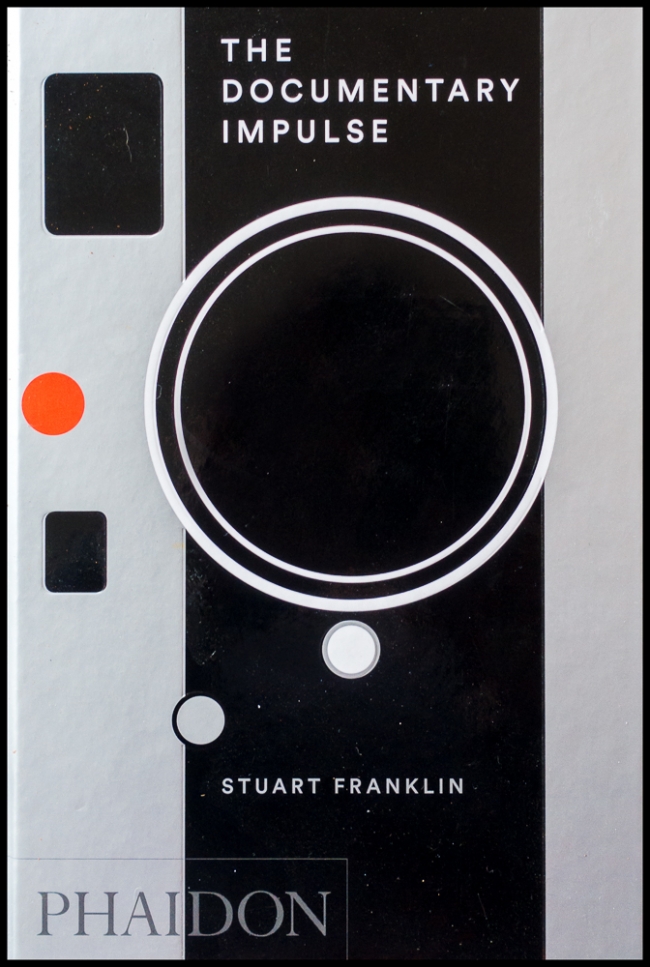I consider myself a documentary photographer so when I saw this book it didn’t take me long to decide that I had to have a copy.
In a review entitled “The Documentary Impulse” in the New York Journal of Books, Richard Rivera notes:
…Stuart Franklin’s The Documentary Impulse begins by questioning “What is documentary?” and draws distinctions between a “moral truth” and a “material truth,” and how at times a more powerful and visceral impact depends on intimacy rather than actuality. One example given is the staged walrus hunt in filmmaker Robert J. Flaherty’s Nanook of the North (1922), and how it leads us to draw conclusions as to what actually occurred.
The author also examines why photographers document the vestiges of vanishing cultures, as in the work of Edward S. Curtis with native Americans (from 1906 to 1930), and tackles how preconceived ideas of cultural mythos can cloud the process of objective documentation, the false premise of documenting cultures from an inherently racist point of view, and the challenges of documenting war and famine within the context of photojournalism.
Franklin adeptly explores the cumulative impact of staging and manipulative photography through references to Leni Riefenstahl’s film The Triumph of Will; Robert Capa’s Falling Soldier, 1936; Werner Herzog’s manifesto, “Minnesota Declaration: Truth and Fact in Documentary Cinema”; as well as TIME magazine’s founder, Henry Luce, and his philosophy of “fakery in allegiance to the truth.”
Stuart Franklin’s in-depth discourse on the role of photographers in society, and the needs that can only be addressed or spotlighted through photography, can be summed up in Lewis Hine’s life mission, “I wanted to show the things that had to be corrected. I wanted to show the things that had to be appreciated.”
The Documentary Impulse is a wide-ranging passionate exploration that covers many periods of photography and delves into the why and how we are driven to document the world around us.
The images are printed on high quality medium-weight matte paper, in color or black and white as originally intended.
Stuart Franklin is a photojournalist with an outstanding body of work, and his opening statement, “Photography (and journalism) practiced respectfully has the power to educate us all towards the greater understanding of, and empathy with, others,” is fully borne out by the book.
The Documentary Impulse is a remarkably insightful book—a wonderful, small format gem bursting with illuminating concepts and images.
So across this broad spectrum of types of documentary photography where do I see myself fitting. I certainly don’t document colonialism; nor am I a war photographer. I’m not trying to change the world. I could perhaps fit into the “(Re)interpreting everyday life”. I feel some affinity with Martin Parr and Lee Friedlander who both feature in this chapter. Perhaps the best fit is with what Franklin refers to as “On Visual Poetry and ambiguity”. This chapter features Eugène Atget, Henri Cartier-Bresson, Garry Winogrand and other photographers I’m not too familiar with: Helen Levitt, Sergio Larrain, Guy Tillim
.
I could quibble about the way that some of the photographers have been categorized. Why, for example is Josef Sudek (one of my favorite photographers) included under “Photography’s bid for a better world”? I was also surprised to find that even though Walker Evans is mentioned a number of times in the text, none of his photographs are presented. Of course these comments reflect my own, subjective views.
I differ from almost all (perhaps with the exception of Atget) of the above photographers in that my photographs rarely show people. And, of course, they are all so much more accomplished than I. Their work is what I aspire to, but will probably never come close to. It does, however, give me something to aim for.
I very much enjoyed this book.
Taken with a Sony RX-100 M3.

